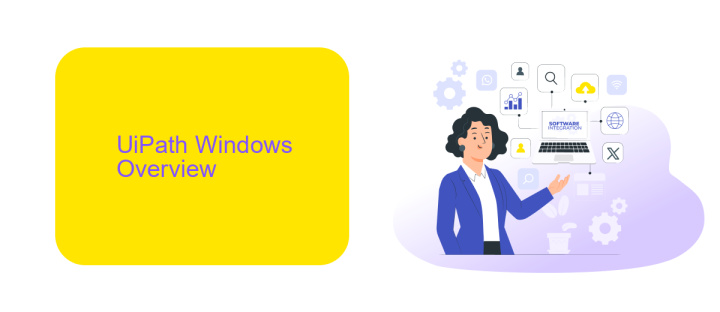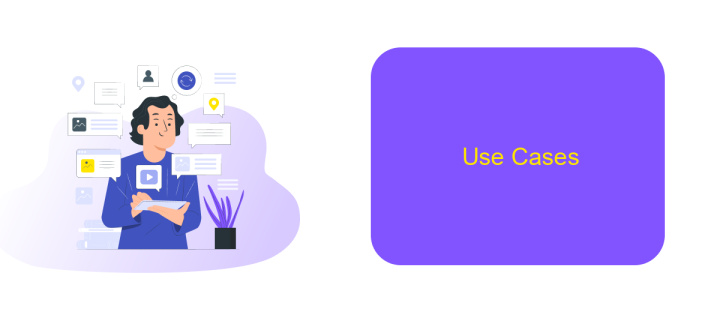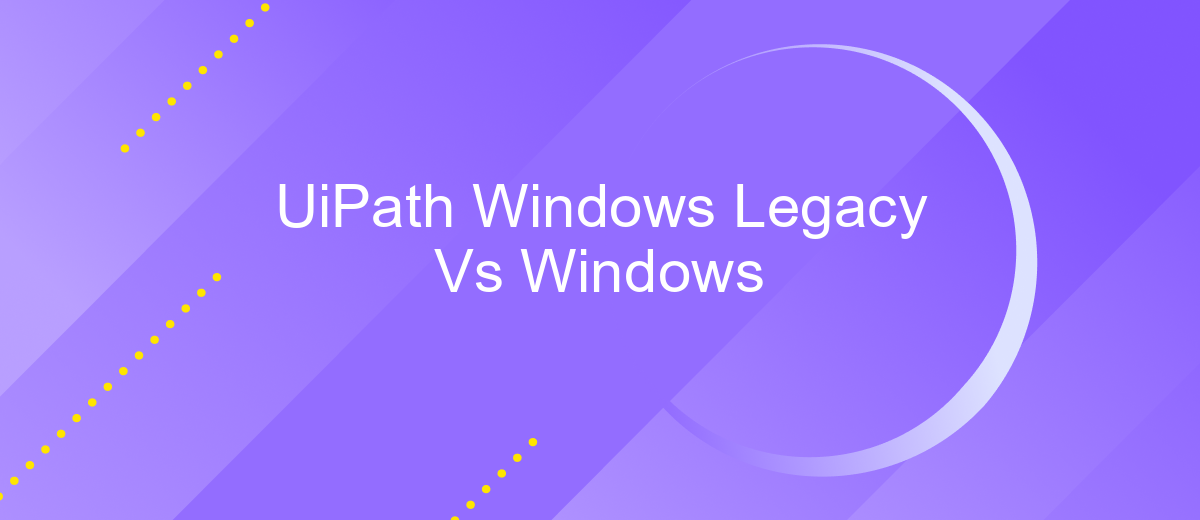UiPath Windows Legacy Vs Windows
When it comes to robotic process automation (RPA), UiPath offers two distinct frameworks: Windows Legacy and Windows. This article explores the key differences between these two environments, helping businesses and developers make informed decisions. Whether you're aiming to optimize legacy systems or leverage modern Windows capabilities, understanding these frameworks is crucial for maximizing efficiency and innovation.
UiPath Windows Legacy Overview
UiPath Windows Legacy is a robust platform designed for automating repetitive tasks and business processes. It caters to enterprises looking to streamline their operations through automation, offering a reliable environment for deploying and managing workflows. This version is particularly beneficial for businesses with existing legacy systems that need integration without a complete overhaul.
- Supports older Windows environments and applications
- Ensures compatibility with legacy systems
- Offers extensive automation capabilities
- Easy integration with third-party services like ApiX-Drive
One of the standout features of UiPath Windows Legacy is its ability to seamlessly integrate with existing systems through services like ApiX-Drive. This integration facilitates smooth data transfer and process automation, ensuring that businesses can leverage their current infrastructure while modernizing their operations. As a result, companies can achieve higher efficiency and reduced operational costs without the need for significant changes to their existing setups.
UiPath Windows Overview

UiPath Windows is a modern platform designed to streamline and automate business processes through advanced robotic process automation (RPA) capabilities. It provides a robust and flexible environment for developing, testing, and deploying automation workflows. The platform supports seamless integration with various applications and services, enhancing productivity and efficiency across different business functions. UiPath Windows offers a user-friendly interface, making it accessible for both technical and non-technical users to build and manage automation projects.
One of the key features of UiPath Windows is its ability to integrate with a wide range of third-party applications and services. This is particularly beneficial for organizations looking to automate complex workflows that involve multiple systems. For instance, services like ApiX-Drive can be utilized to set up and manage integrations effortlessly, allowing businesses to connect UiPath with various apps and services without extensive coding. This capability not only simplifies the automation process but also ensures that data flows smoothly between different platforms, enhancing overall operational efficiency.
Compatibility

When comparing UiPath Windows Legacy and Windows, compatibility is a critical factor to consider. Both versions offer robust automation capabilities, but their compatibility with various systems and applications can differ.
- Windows Legacy: This version is designed to work seamlessly with older Windows operating systems. It supports a wide range of legacy applications and systems, making it ideal for organizations with outdated infrastructure.
- Windows: The modern Windows version of UiPath is optimized for the latest Windows operating systems. It ensures better performance and compatibility with contemporary applications and cloud services.
For integrating various systems and automating workflows, services like ApiX-Drive can be incredibly useful. ApiX-Drive facilitates smooth integration between UiPath and other software, enhancing overall compatibility and functionality. This allows organizations to create efficient, automated processes without worrying about incompatibility issues.
Use Cases

When choosing between UiPath Windows Legacy and Windows, understanding their use cases is crucial for making an informed decision. Both versions cater to distinct needs, making them suitable for different automation scenarios.
UiPath Windows Legacy is ideal for organizations with older systems and applications that may not be compatible with the latest Windows updates. This version ensures that legacy systems can still benefit from automation without requiring significant infrastructure changes.
- Automating legacy applications and systems
- Maintaining compatibility with older software
- Reducing costs associated with system upgrades
On the other hand, UiPath Windows is designed for modern environments, offering enhanced performance and better integration capabilities. For instance, services like ApiX-Drive can be seamlessly integrated to streamline workflows and automate data transfers between various applications. This version is perfect for businesses looking to leverage the latest technologies for their automation needs.
Migration Considerations
When migrating from UiPath Windows Legacy to Windows, it is crucial to evaluate the compatibility of existing workflows with the new environment. Ensure that all dependencies, libraries, and packages are supported in the Windows version. Conduct thorough testing to identify any potential issues that may arise during the transition. Additionally, consider the impact on your development and runtime environments, including hardware and software requirements, to ensure a seamless migration process.
Another important consideration is the integration of external services and APIs. Tools like ApiX-Drive can facilitate the integration process by automating data transfers between various applications and services. This can significantly reduce the complexity and time required for migration. Evaluate the need for such tools in your migration strategy to enhance efficiency and minimize disruptions. Proper planning and execution are essential to ensure a smooth transition and to leverage the full capabilities of UiPath Windows.
FAQ
What is the main difference between UiPath Windows Legacy and UiPath Windows projects?
Can I migrate my UiPath Windows Legacy project to a UiPath Windows project?
Are there any performance benefits in using UiPath Windows over Windows Legacy?
Do I need to change my automation integrations when upgrading from Windows Legacy to Windows?
Is it mandatory to upgrade from UiPath Windows Legacy to UiPath Windows?
Time is the most valuable resource for business today. Almost half of it is wasted on routine tasks. Your employees are constantly forced to perform monotonous tasks that are difficult to classify as important and specialized. You can leave everything as it is by hiring additional employees, or you can automate most of the business processes using the ApiX-Drive online connector to get rid of unnecessary time and money expenses once and for all. The choice is yours!

